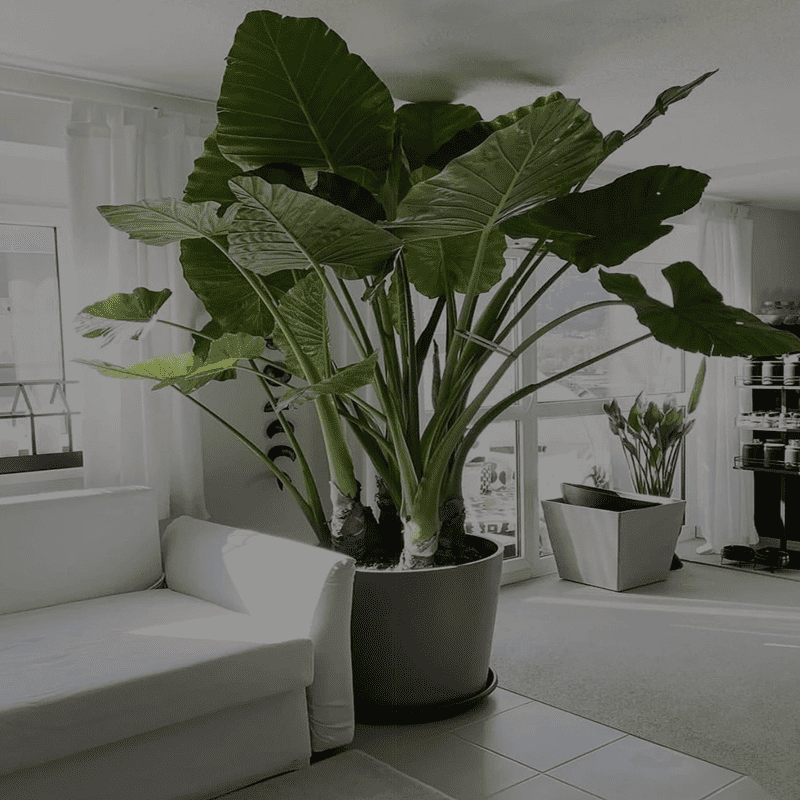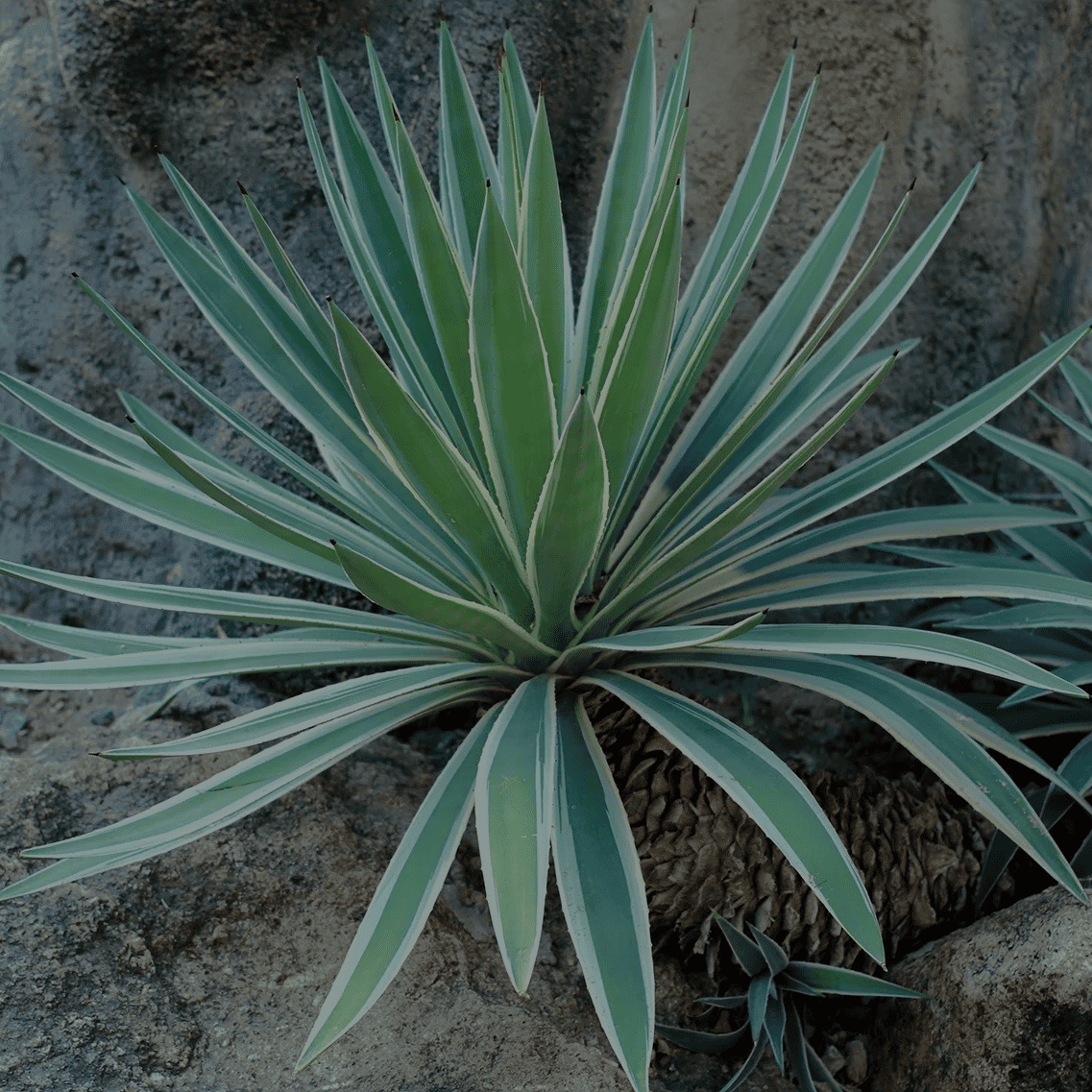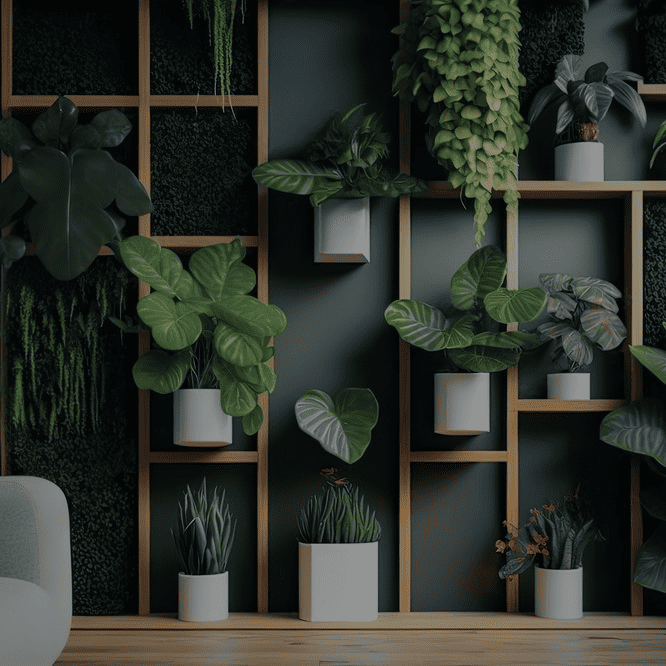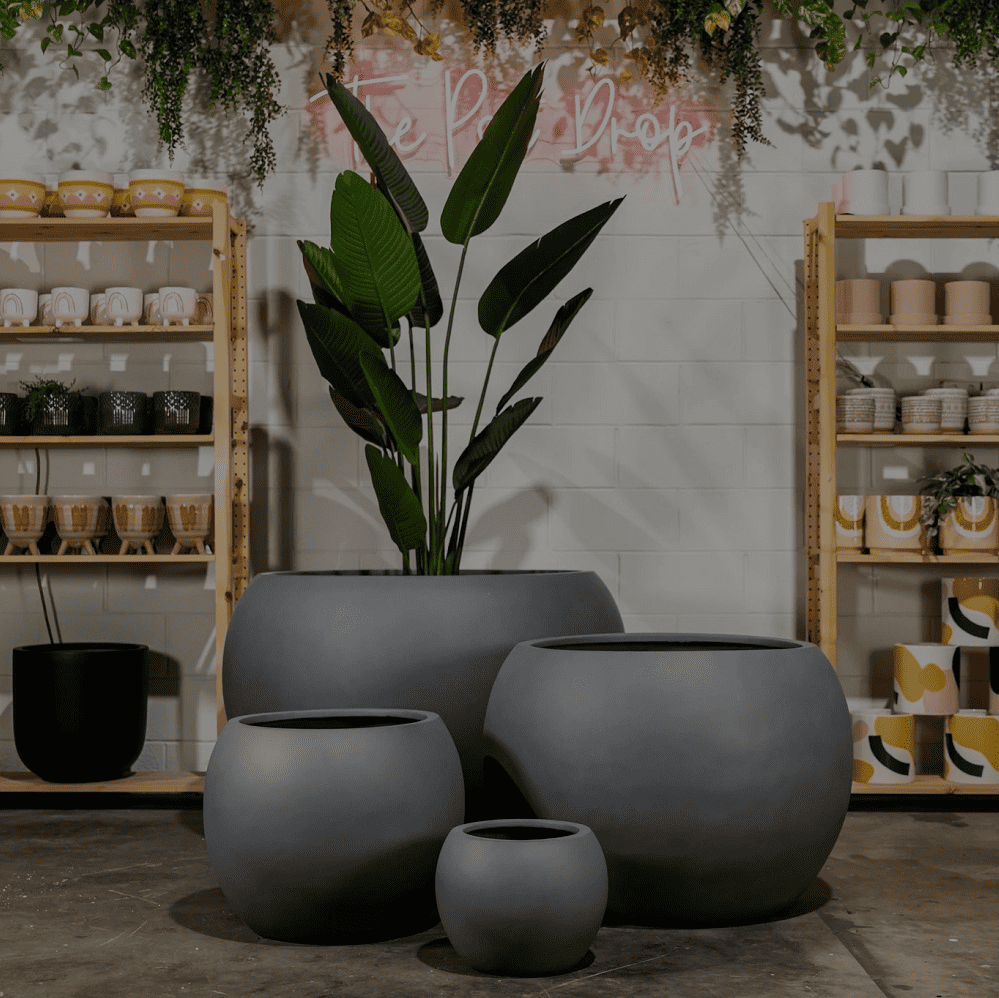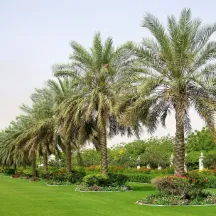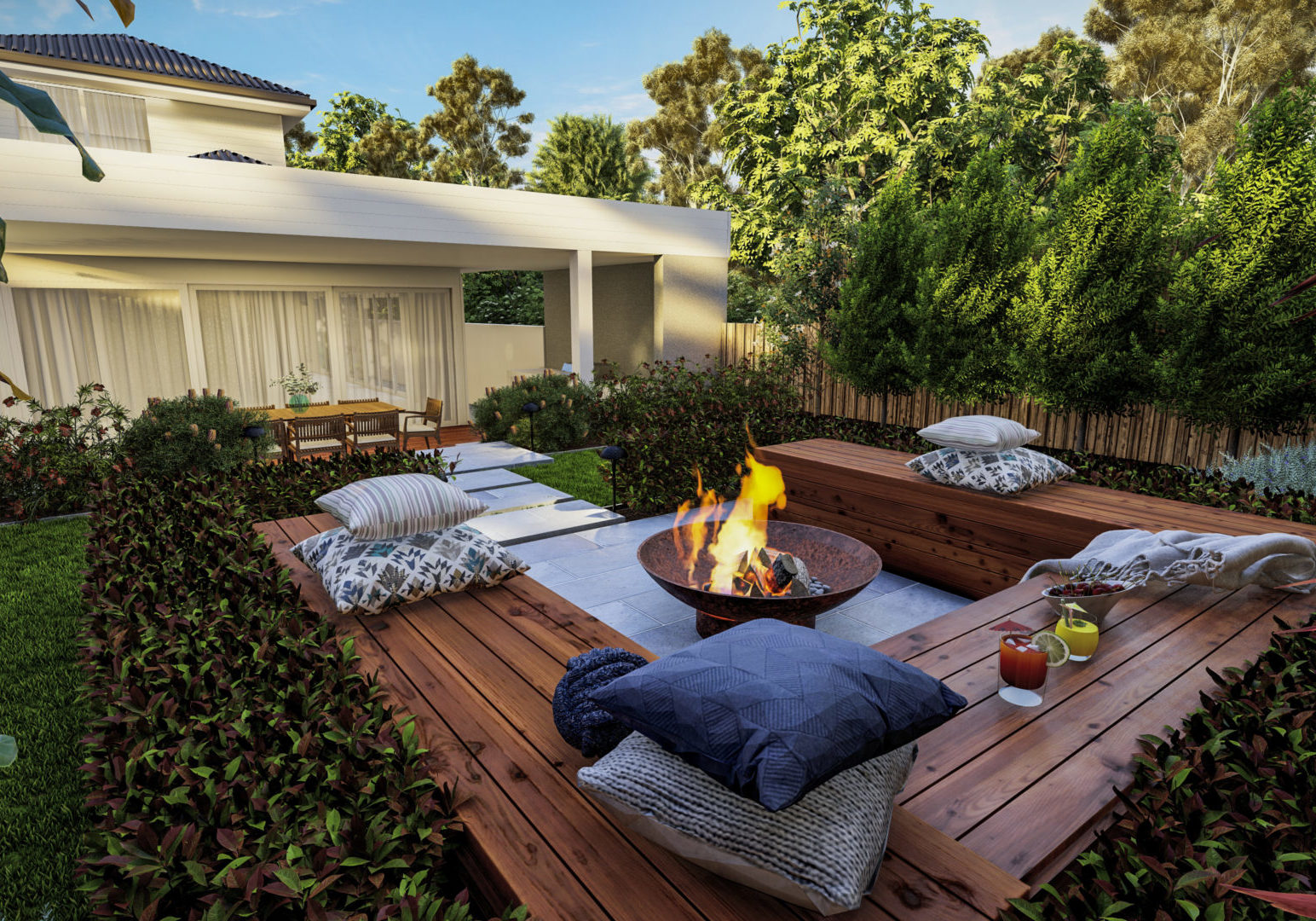Introduction
Landscape design is not just about arranging plants but adding decorative features. It is a thoughtful process that blends art, science, and functionality to create outdoor spaces more beautiful, purposeful, and sustainable. A well-planned design can upgrade ordinary spaces like a cozy backyard, a corporate courtyard, or a sprawling garden into inviting environments.
Landscape Design is beyond aesthetics; it enhances property value and supports mental and physical well-being. It also promotes environmental sustainability and enhances the overall quality of life. In this article, we’ll explore what landscape design is, its principles, benefits, and practical ideas to help you make the most of your outdoor spaces.
What Is Landscape Design?
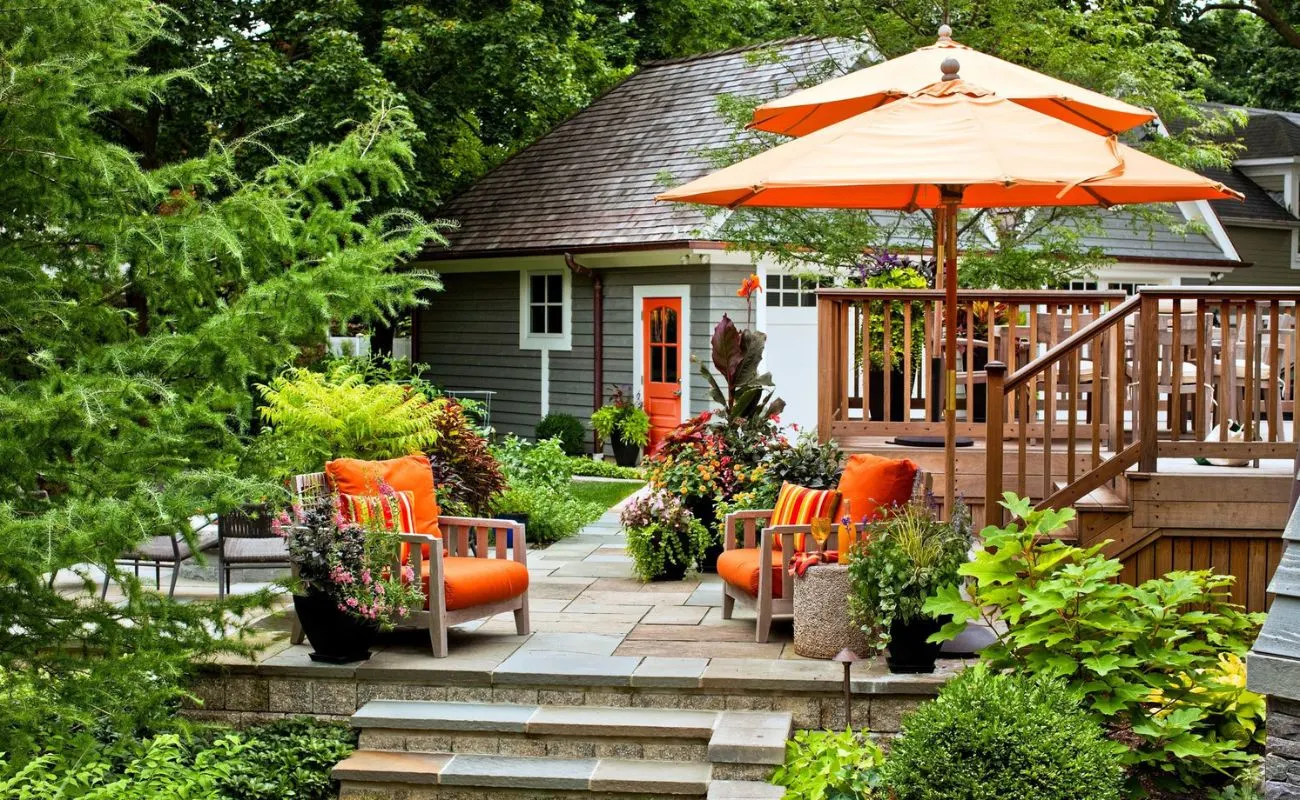
Landscape design is the art of planning, arranging, and managing outdoor spaces to achieve a balance between nature and functionality. It combines elements of horticulture, architecture, and environmental planning to create spaces that look appealing and serve practical purposes.
Key Components of Landscape Design comprise
- Site Analysis: Studying soil quality, sunlight, drainage, topography, and existing vegetation.
- Plant Selection: Choosing suitable plants based on climate, aesthetics, and maintenance needs.
- Hardscape Integration: Adding structures like patios, walkways, decks, retaining walls, and water features.
- Sustainability Measures: Incorporating eco-friendly solutions such as rain gardens, composting, xeriscaping, and water-efficient irrigation.
A strategic plan is required for landscape design, as opposed to simple gardening, in order to maintain balance between hardscape (paths, lighting, and constructed structures) and softscape (plants, grass, and flowers).
Key Benefits of Thoughtful Landscape Design
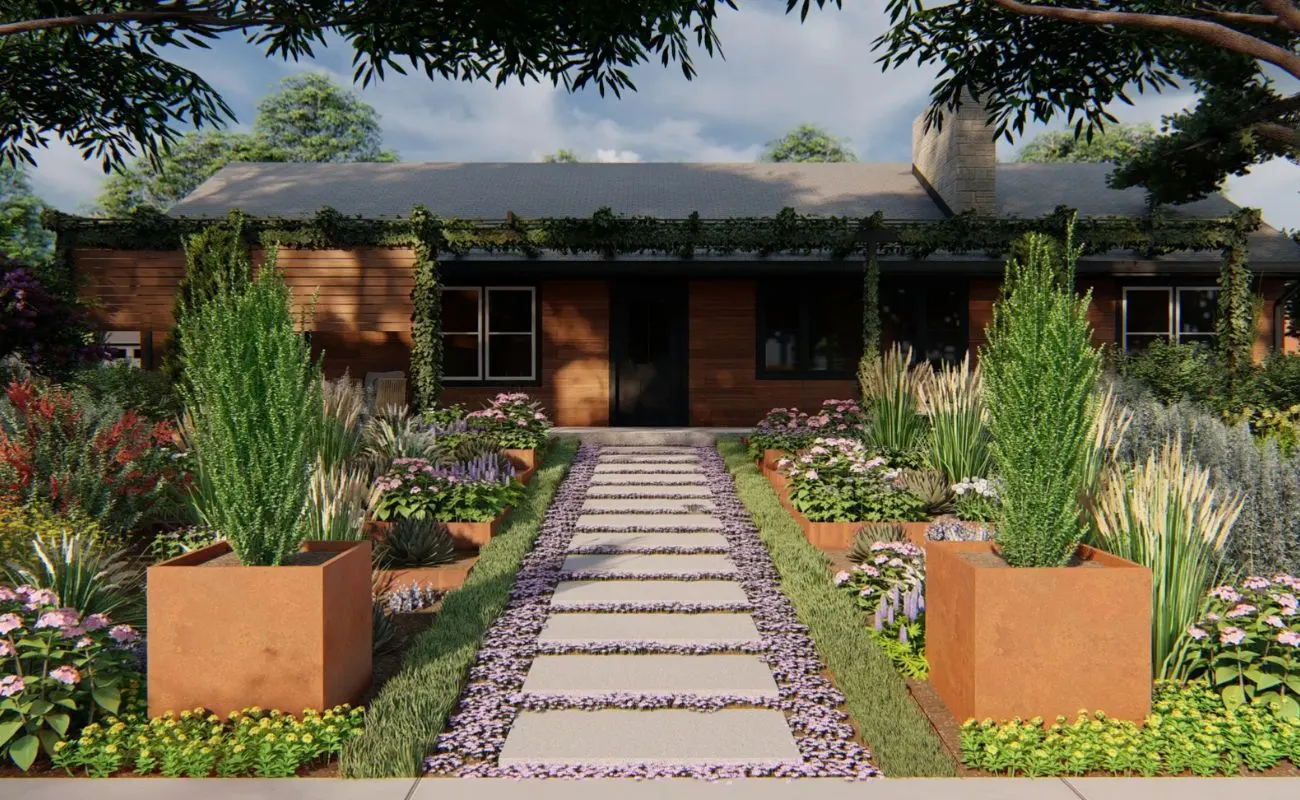
1. Boosts Property Value & Curb Appeal
First impression is the last impression, and your landscape design is the first thing that people see when they enter your home. A well-designed outdoor space can elevate curb appeal and increase property value by 15% to 20%. High-end features like strategic lighting, defined walkways, lush gardens, and attractive hardscape in your home or business make it stand out.
Pro Tip: Use a mix of evergreens, seasonal flowers, and layered plantings to create an attractive visual image.
2. Improves Health, Mood & Connection to Nature
Spending time in Nature is proven to reduce stress, lower anxiety, and enhance overall mental well-being. According to multiple studies, exposure to greenery improves focus, creativity, and happiness levels.
Pro – Tip- A well-designed Garden encourages outdoor activities like yoga, meditation, and family gatherings, promoting physical health alongside mental rejuvenation.
3. Increases Energy Efficiency & Microclimate Control
Energy expenses can be reduced, and temperature regulation can be aided by intelligent landscape design. While evergreen hedges serve as windbreaks in the winter, keeping interior temperatures warmer, planting shade trees close to your house can reduce your need for air conditioning in the summer.
Pro – Tip: Installing rain gardens and permeable pavements are examples of sustainable design techniques that help control water runoff and reduce the risk of flooding.
4. Encourages Sustainability & Eco-Friendly Living
Modern landscape design embraces sustainable practices to minimize environmental impact
Using native and drought-tolerant plants can help to reduce water consumption.
Installing drip irrigation systems for efficient watering.
Incorporating composting to enrich soil naturally.
Using permeable paving to reduce stormwater runoff.
These practices not only conserve resources but also create self-sustaining ecosystems that require less maintenance.
5. Creates Functional Outdoor Living Spaces
Those days are gone when the outdoor areas were just used for gardens. Today’s landscape designs transform spaces into “outdoor living rooms” which are equipped with patios, fire pits, pergolas, kitchens, and seating zones. Whether it’s hosting a barbecue, enjoying evening tea, or setting up a play area for kids, well-planned landscapes maximize usability while maintaining aesthetics.
6. Supports Local Ecosystems & Biodiversity
Incorporating native plant species, birdhouses, water features, and pollinator-friendly flowers attracts birds, butterflies, and beneficial insects. This not only adds vibrancy but also helps maintain ecological balance and contributes to wildlife conservation.
Principles of Effective Landscape Design
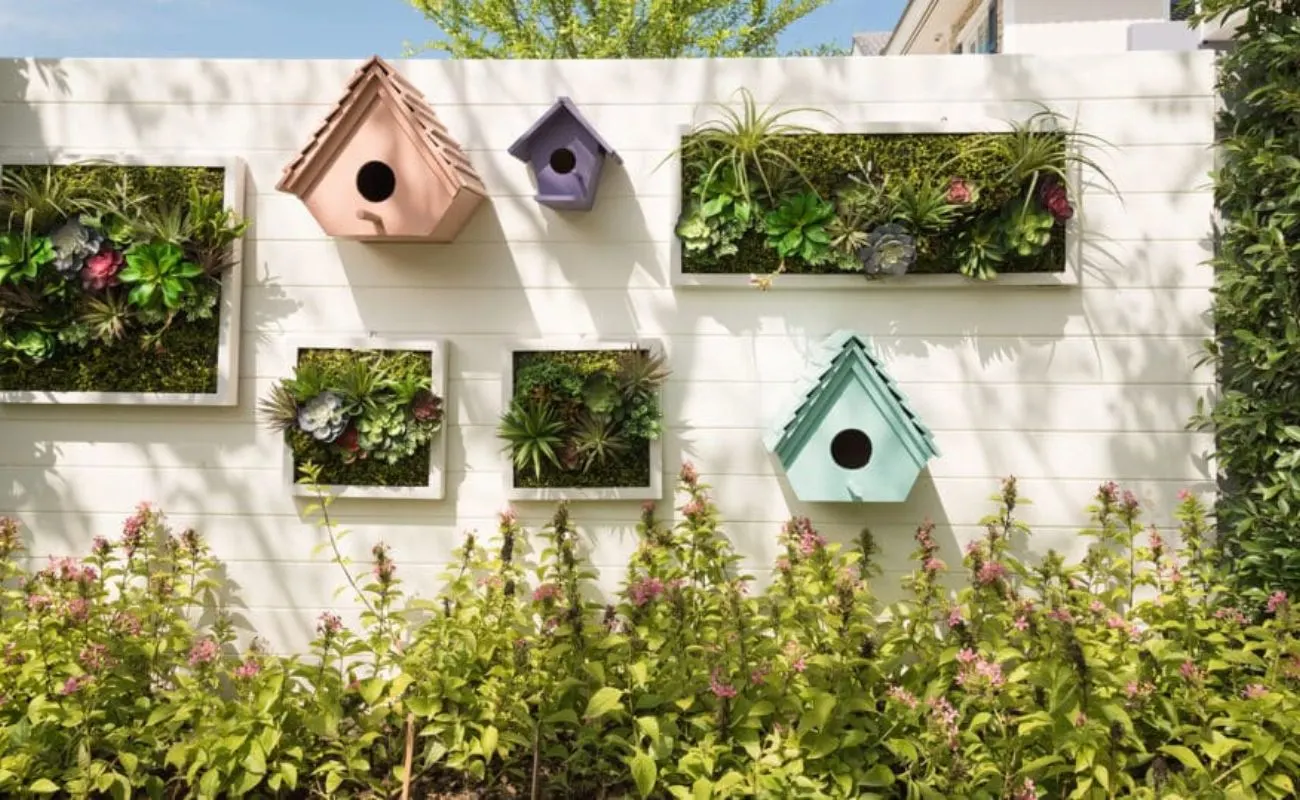
Concentrate on these fundamental ideas to create a design that is beautiful, sustainable, and harmonious.
- Unity & Harmony – Consistency in Style, Plant choices, and materials is great idea.
- Balance & Proportion – Use symmetry or asymmetry to maintain visual equilibrium.
- Focal Points – Use key features like water fountains, sculptures, or unique trees.
- Smooth Transitions – Design seamless flow between different zones and levels.
- Texture & Contrast – Mix foliage textures, hardscape materials, and plant heights for depth.
- Low-Maintenance Planning – Choose plants and layouts that match your maintenance capacity.
Practical Landscape Ideas & Trends
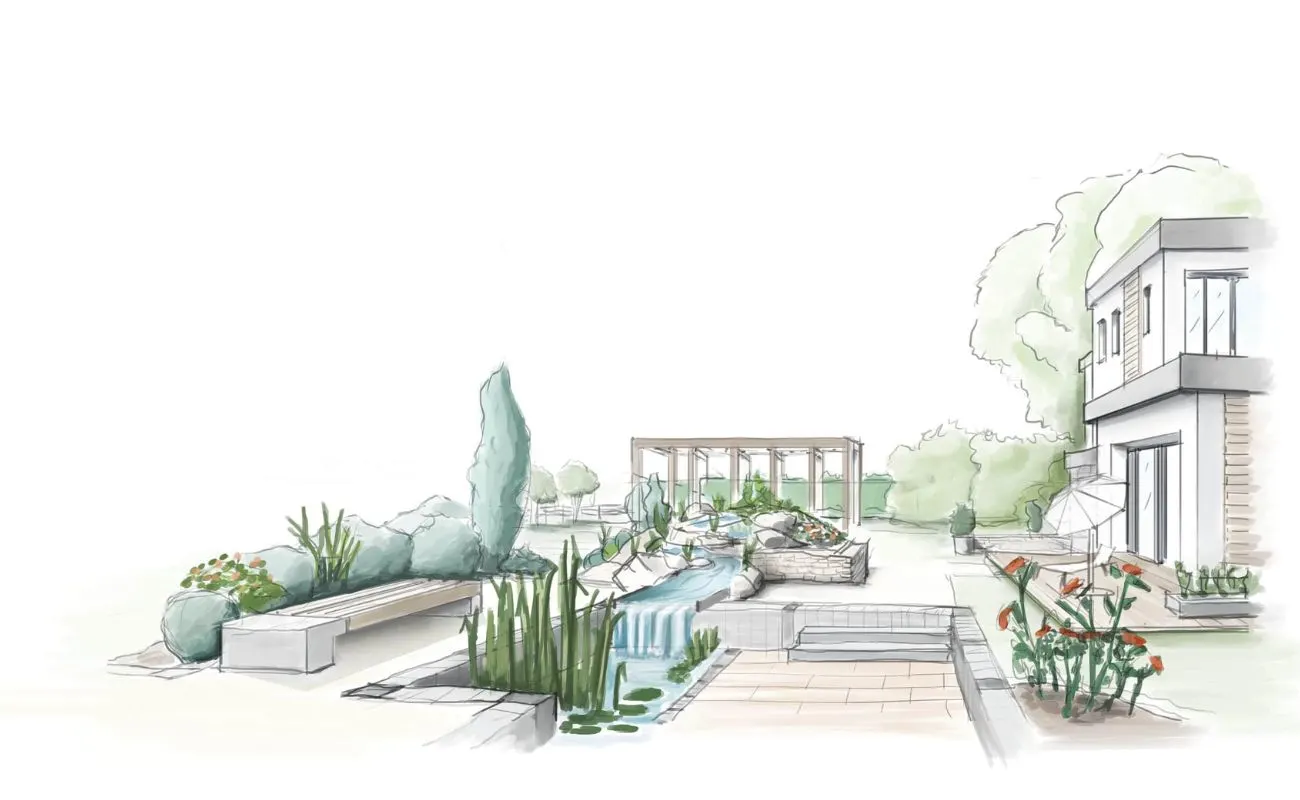
1. Wellness Gardens
These days, wellness gardens are becoming increasingly popular, designed to relax the senses and encourage mindfulness. These gardens feature
Aromatic plants like lavender and jasmine
Calming water features
Comfortable seating areas
Organic vegetable patches
2. Multifunctional Outdoor Spaces
Modern homeowners want outdoor areas that serve multiple purposes—entertainment, dining, relaxation, and even work-from-home setups.
Install pergolas or gazebos for shade and gatherings.
Create outdoor kitchens for weekend barbecues.
Add fire pits for cozy winter evenings.
3. Eco-Friendly Designs
Sustainability drives today’s landscaping trends
Use xeriscaping techniques to minimize water usage.
Opt for solar-powered garden lighting.
Incorporate rainwater harvesting systems for irrigation
Frequently Asked Questions (FAQs)

- What’s the difference between landscape design and landscape architecture?
Landscape design focuses on small to medium-scale outdoor aesthetics and usability, while landscape architecture deals with large-scale planning like parks, commercial complexes, and cityscapes. - How much can landscape design increase property value?
On average, a well-executed landscape design can boost the property value by 15% to 20%. - What is xeriscaping, and why is it important?
Xeriscaping uses drought-resistant plants and efficient irrigation to conserve water while maintaining beauty, which is ideal for areas facing water scarcity. - Can landscape design improve mental health?
Absolutely. Research shows that spending time in green and calming environments can reduce stress, boost mood, and enhance cognitive function. - How do I start planning my landscape design?
Begin by analyzing your site’s sunlight, soil, and space availability. Set clear goals, sketch layouts, and decide on a plant palette. Hiring a professional can ensure better results.
Conclusion
Landscape design isn’t just about beautification, but it’s about creating meaningful, functional, and sustainable spaces that enrich your life. A well-planned landscape can boost property value, promote wellness, reduce energy consumption, and support local ecosystems.
With the right approach, your outdoor area can become an extension of your lifestyle—where aesthetics, comfort, and sustainability coexist in perfect harmony.
UPCOMING ARTICALS
Hardscaping: Incorporating elements like patios, walkways, retaining walls, and fire pits.
Plant Selection: Choosing the right plants for different climates, soil types, and aesthetic goals.
Landscape Lighting: Using lighting to enhance outdoor spaces, including energy-efficient and solar options.
Vertical Gardens: Using walls and other vertical spaces for growing plants, especially in urban settings.
Edible Landscaping: Integrating fruits, vegetables, and herbs into decorative garden designs.
Wildlife Gardens: Creating habitats that attract and support local wildlife, such as birds, bees, and butterflies.
Smart Irrigation Systems: Implementing technology for efficient watering, including drip irrigation and smart controllers.
